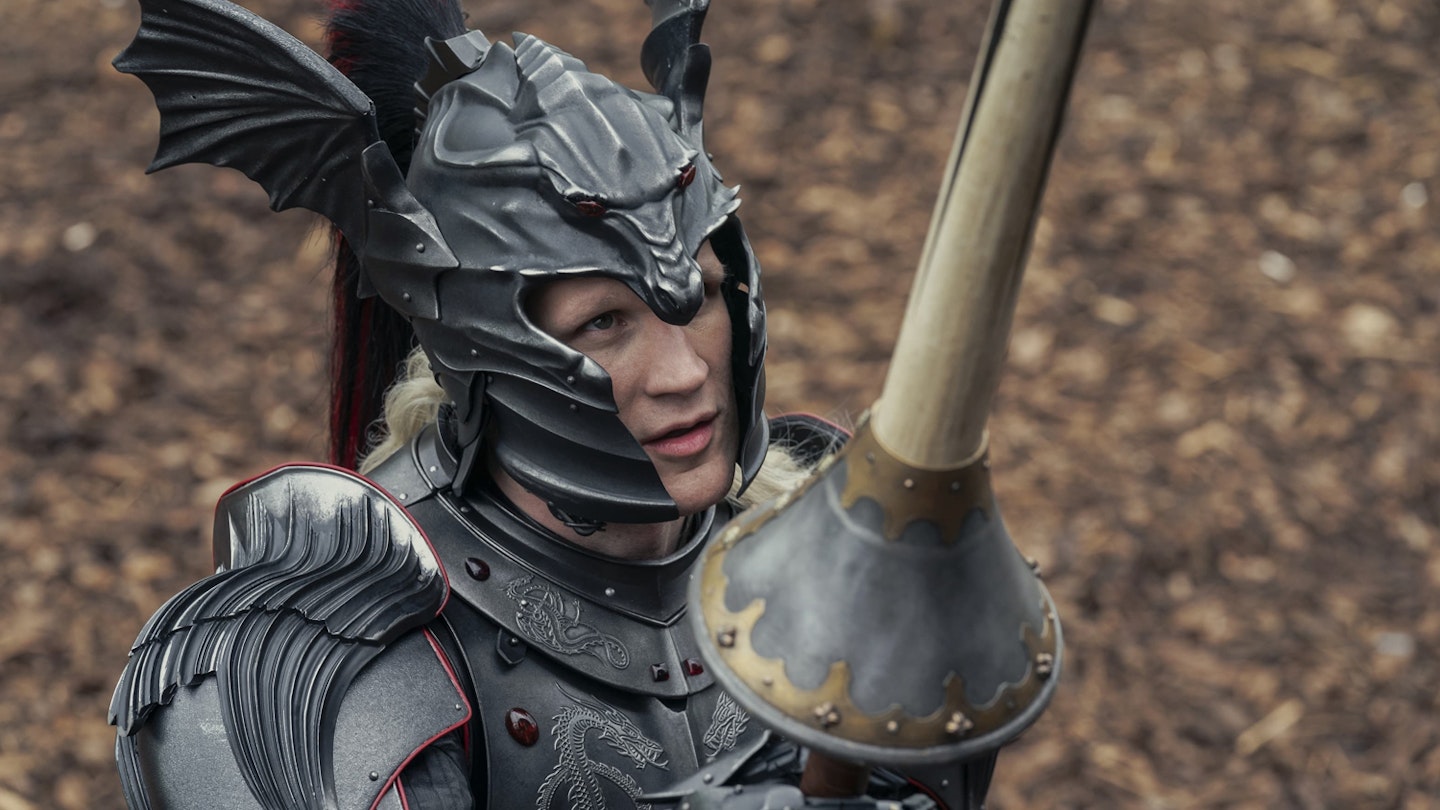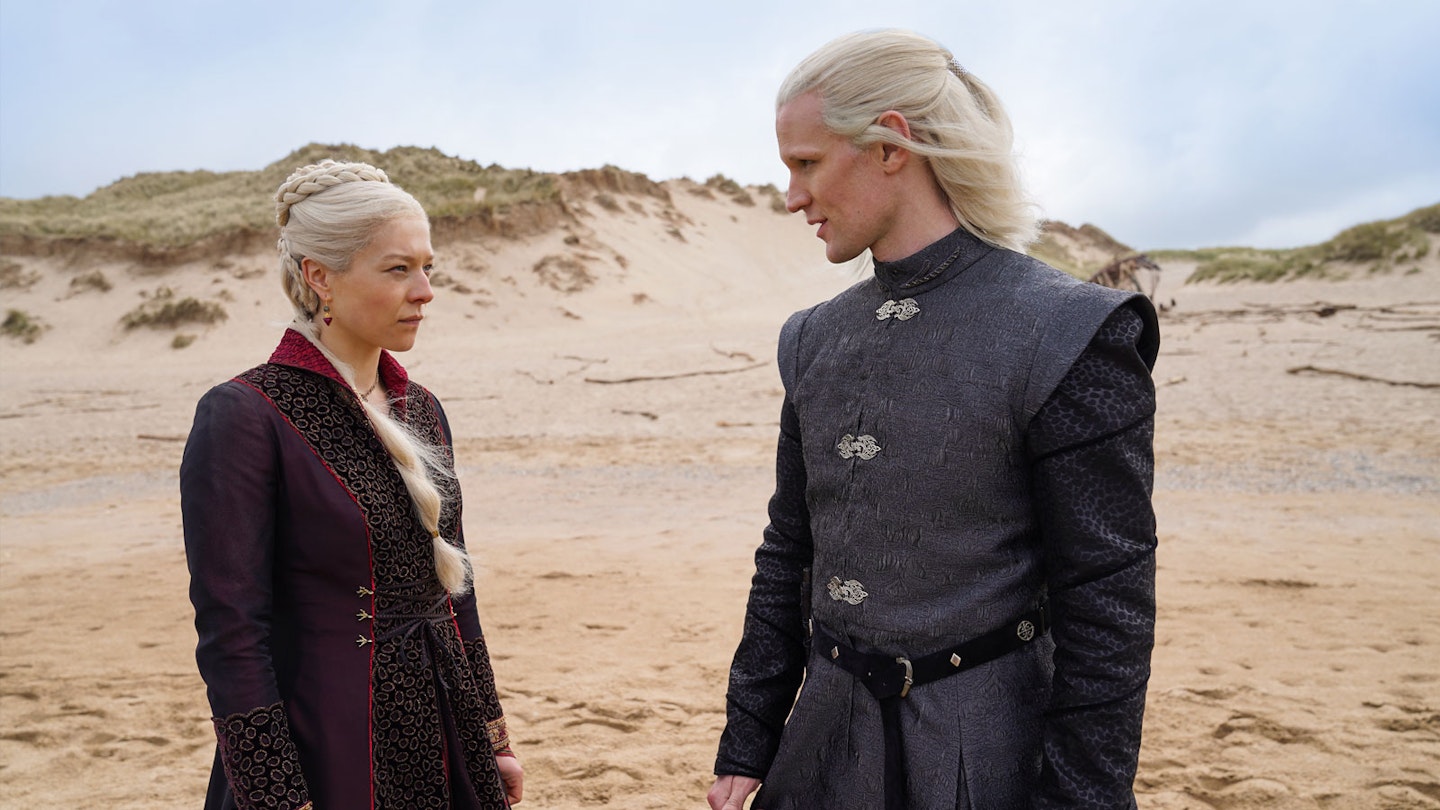Episodes viewed: 6 of 10
Airing on: Sky Atlantic / Now TV
Prequels are hard. (Just ask George Lucas.) To make one work, you have to escape the shadow of the original, find stakes and tension in a story to which everyone ultimately knows the ending, and — if you’re House Of The Dragon — follow up a show like Game Of Thrones, which was, almost simultaneously, the most-acclaimed and least-acclaimed television series of all time. HBO’s lavish fantasy adaptation of George R.R. Martin’s books ended in 2019 on such a sour note among some quarters that it’s easy to forget it was, at its peak, as good as TV has ever been: teeming with richly sketched political intrigue, complex characters, historical allegory and big-budget fantasy spectacle.

In this first spin-off show, much is different, and much is familiar. There is still gruesome violence, well-placed swearing, and abundant orgies. The peroxide wigs still look resolutely like wigs. There are whispers, too, of a “Great Winter” and the “Prince That Was Promised”, along with occasional appearances from Baratheons, Starks and Lannisters — hints of players in the game to come. Sensibly, though, fan service is not laid on too thick, the writers perhaps conscious of previous criticism. This is emphatically a Targaryen story, the lens intimately trained on one family, slowly tearing itself apart.
The writing so far lacks the sparkle of Game Of Thrones' most profound moments.
That is both an asset and a flaw. There is a focus to the storytelling that was never there in the original show: a single noble house, a single question being answered — Succession, if Logan Roy rode dragons — and it gives the series purpose and drive. It’s all heading in one direction: the Targaryen civil war, until now only recited as a dry fictional history in Martin’s Fire And Blood.
But that comes at the cost of texture. There are endless discussions of heirs, endless small council squabbles, endless meetings-that-could-have-been-ravens. The writing so far lacks the sparkle of Thrones’ most profound moments: there is no equivalent to the witty drinking-and-knowing-things of Tyrion, no petty scheming of Littlefinger’s level, no revealing character moments as startling as Robert and Cersei finally having an honest conversation.

It moves at such a whip — the initial episodes span several years — and with such dense politicking that it’s sometimes hard to see the character woods for the plot-heavy trees. Most intriguing among the ensemble is Matt Smith, tremendous as a petulant, hissable villain sharing more than a few traits with the future Prince Joffrey, though Smith finds shreds of humanity to add to the bloodthirsty Targaryen supremacism. Milly Alcock and Emma D’Arcy are excellent, too, sharing the role of Rhaenyra, who, like Daenerys before her, grapples with what it means to be a woman in a violently patriarchal world. “Childbirth is our battlefield,” Rhaenyra is told by her mother, and indeed, there are three shockingly brutal births in the first six hours, only one of which ends well. As much as it purports to revere them, this franchise’s treatment of female characters still feels like a regular blind spot.
At least the stakes feel grand and epic. “This is not a trivial matter,” Paddy Considine’s Viserys intones gravely, and it looks every penny of the reported $150-200 million budget, with a muscularly cinematic battle almost every other hour; a lavish royal wedding that longtime viewers will be right to mistrust; and no scrimping on dragons, either. Thrones took a whole season to introduce its signature beasts; its sister show takes just three minutes. Dragons here are a regular sight in Westeros skies, which makes warfare play very differently; the goalposts inevitably move when you have a dozen giant flying weapons of mass destruction on your side. When utilised best, such as the fiery opening to Episode 3, we’re reminded of the terrible power they still summon: not cheesy fantasy fluff, but true shock and awe.
For all its po-faced plotting, this show has plenty going for it. A decade time-jump in episode six, recasting several characters, gives the series a new energy; D’Arcy and Olivia Cooke (as the troubled Queen Alicent Hightower) breathe new dimensions into their aged-up characters, and the sudden switch-up suggests a show unafraid to take risks. This is a prequel that could surprise us yet. But to even skirt the heights of Thrones’ best work, it has an uphill dragon ride ahead.








